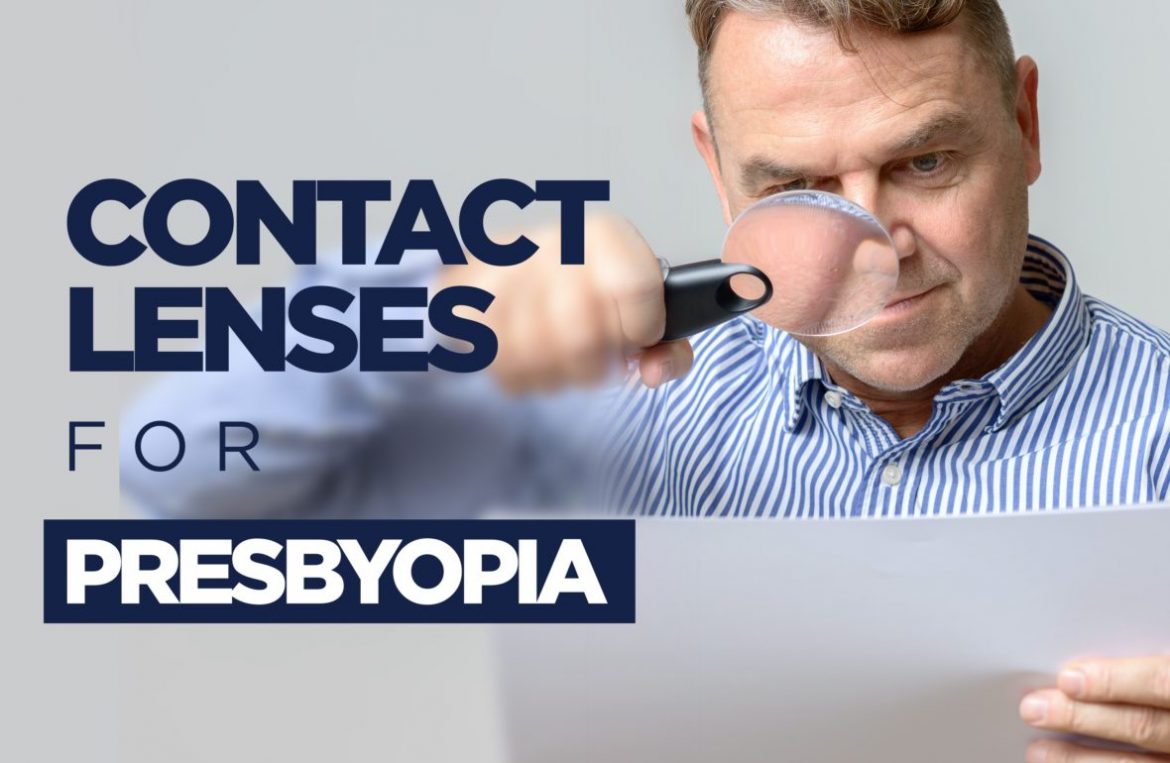![]()
Remember the first time you put your contact lenses in? Ahh… love at first sight, right? You could suddenly see fabulously and felt great about not having to depend on glasses.
But something’s changed, that is, your vision. Your contact lenses no longer provide the correction you need to clearly see objects both near and far. Chances are, you’re now dealing with presbyopia, a declining ability to focus on close-up objects. When trying to read something with small type—say a restaurant menu, food package, or phone—you begin by stretching your arm further away to focus.
Presbyopia is an inevitable (but unenviable) change you’re bound to begin noticing sometime in your 40s.
Not so long ago, you had only one option to correct the problem: reading glasses. Today, you do have options. So, if you favor contacts, you need not get discouraged and trade them in for glasses.
Today, a range of contact lens options are available that deliver vision correction for different focal lengths.
Single vision contact lenses are one option
Some regular wearers of contacts are happy to wear their normal contact lenses and wear reading glasses when necessary. However, if you prefer not to wear eyeglasses, your optometrist may prescribe single vision (or monovision) contact lenses.
If so, the contact lens for your dominant eye will focus on distant objects, and the lens for your non-dominant eye will be for your near vision. You may or may not be satisfied with this approach.
Your doctor will check the balance between the two prescriptions, however some people who go with this solution experience a loss of depth perception. Although the single vision approach may be a good option for you initially, over time it may become less feasible if your need for higher magnification in the non-dominant eye increases.
Multi-focus contact lenses may be a better option
Binocular vision is the ability to focus on an object with both eyes. As such, multi-focus contact lenses are a more popular choice for people with presbyopia.
Three types of multifocal contact lenses are offered:
- Concentric circle
These contacts are designed with multiple circular zones with different powers across the surface of the lens. The circles alternate between distance, intermediate and near-focus. Believe it or not, your brain picks out the zone it needs for the task. - Aspheric
These contacts provide a smooth transition between the different focusing distances much like progressive eyeglasses. Again, your eyes and brain work together to determine which part of the lens is required for the task you’re doing. - Segmented bifocal
Similar to bifocal eyeglasses, segmented bifocal contact lenses have two different focal points—one for distance vision and the other for near work.
These lenses are available in a rigid gas permeable material where the upper half of the lens is powered for distance and the lower for near. The lenses are custom-made and must be purchased directly from your eye care professional. Because disposal multifocal soft contact lenses are readily available, the rigid bifocal lens is rarely prescribed today.
What to expect with your multifocal soft contact lenses
Contact lenses are chosen and fitted precisely for your eye shape and focusing power. The contour, size, and material vary between designs, so it’s important your eye specialist prescribes the lenses specifically for you. Poorly fitted contact lenses can result in discomfort and blurred vision and may even cause an eye infection.
Your optometrist will begin by thoroughly assessing your visual needs, for example, your work, hobbies, sports, and other activities. You may even be asked to try a few different options to find the solution that works best for you.
You may immediately find your vision clear at all distances, but you may not. Many people experience a short period of adaptation, as they would with new eyeglasses.
Multifocal lenses strike a balance between distance, intermediate, and near focus. The lenses focus images from multiple distances onto your eye and send signals back to the brain. Your brain needs to decide which image to focus on based on what you are looking at. It can take a few days for the process to take place.
Your prescription
When you’re prescribed contact lenses for your presbyopia, the prescription will include the specific brand, the power, additional reading power (ADD), the base curve, and the diameter of the lens. Some brands are available in daily, fortnightly, and monthly disposable soft lenses.
Your optometrist will discuss your options with you, make recommendations, and work with you as you try to find the best solution for your vision challenges.

